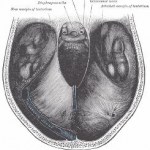
Wired Science reports on a way to bleach your hair without all issues of...you know...turning it so stiff and destroyed that it resembles a donkey tail. All you women of the world itching to turn blonde, take note.
The system involves an enzyme from forest fungus. Which is good somehow. Forest fungus on your hair being good apparently involves a meaning for the word "good" that I was not hitherto familiar with.
Not that it matters for me. The ongoing race about whether I will lose my hair entirely or whether it will turn entirely gray is a dead heat with both being the likely outcome.
I caught this interesting sentence over at Marginal Revolution:
as consumption approaches satiation, workers reduce their hours of work to prevent themselves from actually reaching satiation. More technically, as workers approach satiation, their labor supply curves start to "bend backwards." The result is that rising labor demand stemming from rising productivity raises wages yet reduces employment.
Reminds me of relativity. Thus, one would assume that satiation, like the speed of light, is a level of consumption that a workers can never reach.
I have no idea whether this comparison is…
I know this will be of interesting for about 1 in a hundred of you, but there is a REALLY good review of hippocampal and parahippocampal region connectivity in April's Nature Review Neuroscience. Of special interest, there is an interactive .pdf in the supplementary information where you can identify the connections between one region to every other region. Also, they discuss the functions of the entorhinal cortex and the subiculum from the point of view of update anatomy.
(Unfortunately behind a subscription wall, but I feel confident that anyone who understood a word of what I just said…
I have been reading more on the Natasha Richardson story overnight, and it appears the story has moved into blame-placing mode. (For the original discussion of the story, read this.)
Possible places to lay the blame (that I have read thus far):
The absence of mandatory helmet laws
Canadian medicine's failure to administer rapid CTs
Quebec's inadequate air ambulances
Inadequate patient education
More on these under the fold.
I said before about mandatory helmet laws (and many others said in the comments of the previous post) that while I don't have a problem with mandatory helmet laws for…
So I am way behind the news cycle on this, but I wanted to comment briefly on actress Natasha Richardson's death as a result of an epidural hematoma. From everything I read, she seemed like a very good actress, a very decent woman, and an excellent wife and mother, so I was saddened to read the story. I wish the best to her husband, Liam Neeson, and family.
Epidural hematomas from head injuries are a serious problem -- both to diagnose and to treat, so I want to spend a little bit of time talking about what they are and how to prevent them.
Hematomas are pools of blood caused in the brain…
The New Old Age blog at the NYTimes -- hadn't read it before, but I like it -- has a post about reversible causes of cognitive decline in the elderly. I think they make a really good point: there are reversible causes to senility. Not all mental decline in the elderly is "normal" and certainly it is not always Alzheimer's:
But according to the National Institute on Aging, missed diagnoses of reversible dementia still occur too often. "Some physical and mental changes occur with age in healthy people," the agency writes in a publication called "Forgetfulness." "However, much pain and…
If you work in infectious diseases in a hospital -- or frankly if you work anywhere in a hospital -- the emergence of antibiotic resistant bacteria is a serious problem. You have to be constantly aware of what the right drug is to prescribe to ensure its maximum effectiveness, and -- though rare -- there are some bacterial infections for which we have no good drugs.
This is why I was very intrigued about researchers trying to design antibiotics that would not create resistant bacteria:
Vern L. Schramm, Ph.D., professor and Ruth Merns Chair of Biochemistry at Einstein and senior author of the…
This is just unbelievable. At a day care center in Arkansas, 10 kids were accidentally given windshield wiper fluid instead of Kool-Aid:
Child welfare investigators plan to talk to the owner of an Arkansas daycare center where 10 children were sickened after they were given windshield wiper fluid to drink.
"They'll go out, they'll get an explanation and they'll try to sort (it) out preliminarily," said Julie Munsell, spokeswoman for the state Department of Human Services.
Hospital officials say a staffer mistakenly put the blue liquid in the refrigerator after shopping and later served it…
Most of the stuff you hear about hyperbaric oxygen being used to treat is total nonsense. It isn't effective at treating autism or cerebral palsy.
But an article in the Times makes the point that it is effective for treating some things:
The Undersea and Hyperbaric Medical Society, the professional organization in this field, recognizes 13 conditions for which it is legitimate to place patients in high-pressure chambers that force pure oxygen into their blood and tissues. Eleven of those conditions have been approved by Medicare for reimbursement, indicating that solid evidence supports…
Did you catch this story? A man in Illinois walks into a church and shoots the pastor. After killing the pastor, his gun jams, he grabs a knife and starts stabbing himself. At which point, he is tackled by two guys and remanded into custody.
Now his lawyer is claiming that his mental status was impaired because he had Lyme disease. (And, shocker: this interpretation of the story is being pushed over at Huffington Post.)
Listen, this guy may be crazy. In fact, he undoubtedly has severe emotional and neurological problems. But Lyme disease isn't why.
Lyme disease is caused by a…
In the Economist, they have a piece in "honor" of the 100th year anniversary of the first attempts to render drugs illegal. After looking at the evidence, they take a dim view of the drug war's effectiveness:
A HUNDRED years ago a group of foreign diplomats gathered in Shanghai for the first-ever international effort to ban trade in a narcotic drug. On February 26th 1909 they agreed to set up the International Opium Commission--just a few decades after Britain had fought a war with China to assert its right to peddle the stuff. Many other bans of mood-altering drugs have followed. In 1998…
I caught this story (with an accompanying video) over at Mind Hacks and Neuron Culture about this poor woman from the UK who fell unconscious from a viral infection in her brain stem. Using fMRI, a doctor at Cambridge named Adrian Owen showed that she still had residual brain functions such as response to light. The woman has since recovered from her condition and can interact, though she still faces substantial impairment.
The thing is that people are continuing to use the term persistent vegetative state to describe her condition. I think this is misusing the term. A better description…
This is pretty funny. It is a song honoring the polymerase chain reaction (PCR) that parodies "We are the world." (Check below the fold.)
Hat-tip: TierneyLab
Caught this bad description of an otherwise very interesting study at Science Daily:
Neuroscientists at Georgetown University Medical Center have, for the first time, shown what brain activity looks like when someone anticipates an action or sensory input which soon follows.
In the February 25 issue of the Journal of Neuroscience, they say this neural clairvoyance involves strong activity in areas of the brain responsible for preparing the body to move.
The findings were made by using functional magnetic resonance imaging (fMRI) in a group of student volunteers who brought with them favorite…
One of the impediments to the adoption of a solar alternative to fossil fuels is that solar panels are relatively expensive to make. A big benchmark to making them competitive is to get their cost of production per Watt produced comparable to energy produced by fossil fuels.
A company in Arizona, First Solar, claims to have broken the $1/Watt barrier for producing solar panels using panels made from cadmium telluride (CdTe). I am definitely impressed, particularly because the company aims to read "grid parity" with fossil fuels, meaning that they will be cost-competitive even without…
There are some people who argue that the Internet increases the size of people's social networks by lowering the transaction costs of interacting with people.
Facebook -- as a dataset -- is handy for determining whether this is true. Everyone on Facebook has friends with whom you communicate on a regular or irregular basis. Therefore, it could allow you to quantify the size of social networks on the Internet.
This is precisely what Cameron Marlow, a sociologist at Facebook, did at the prompting of the Economist.
Marlow looks at the size of social networks on Facebook in terms of friend…
As scientists await Obama reauthorizing federal funding of embryonic stem cell research and the FDA approves the first clinical trials using embryonic stem cell treatments, there is an important case report that highlights the potential safety issues with putting stem cells in humans.
Amariglio et al. report a case in PLoS Medicine of a boy treated by spinal injections of fetal-derived stem cells for a developmental disorder called ataxia telangiectasia. Four years after treatment, the boy developed brain tumors.
From the abstract:
A boy with ataxia telangiectasia (AT) was treated with…
Here is a lesson in why defensive medicine should be avoided: it costs a lot, it doesn't help patients, and it has the potential to hurt them. Chou et al. published a study in the Lancet showing that in patients presenting with lower back pain without serious clinical symptoms (more on this in a second) imaging does not improve outcomes.
Lower back pain is a common presentation in clinic. It is pretty prevalent with about 15 percent of Americans reporting having had it. However, in most cases it isn't anything to be alarmed about. In the majority of cases, it goes away pretty quickly…
Rather than funding new grants, most of the fiscal stimulus to NIH will be going to grants that have already been reviewed. From Science Insider:
The National Institutes of Health will dedicate most of its $8.2 billion for research from the economic stimulus bill to funding grant applications it has already received and to supplementing existing grants. A smaller amount, on the order of $100 million to $200 million, will go to new grant applications it receives in the coming months.
...
Because NIH has to spend the stimulus money within those 2 years, it is under pressure to start sending…
An article by Evan Mills, a staff scientist at Lawrence Berkeley National Laboratory, points out that scientific buildings use a lot more energy than average:
Improving energy productivity is a doubly worthy challenge, given that those making the biggest contributions to the science of sustainability often do so in highly energy intensive facilities such as laboratories, computing centers, and hyper-clean environments. There is a long way to go to meet the sustainable practices. According to a U.K. Department for Environment, Food, and Rural Affairs survey, virtually all interviewed…

